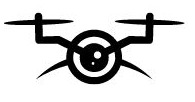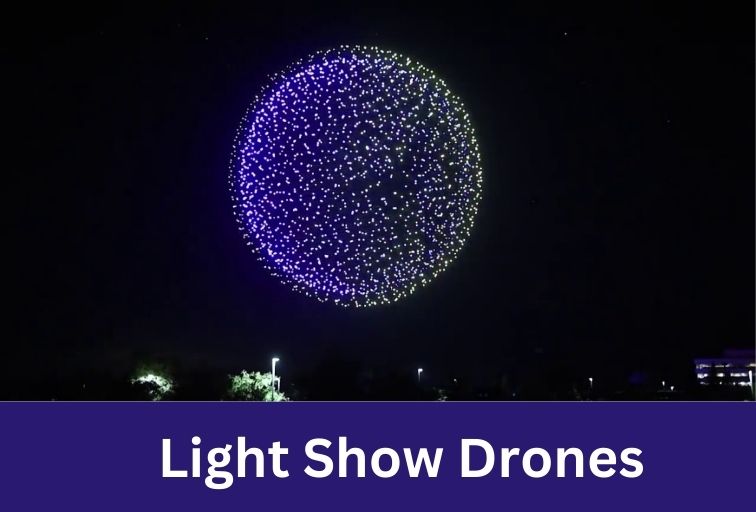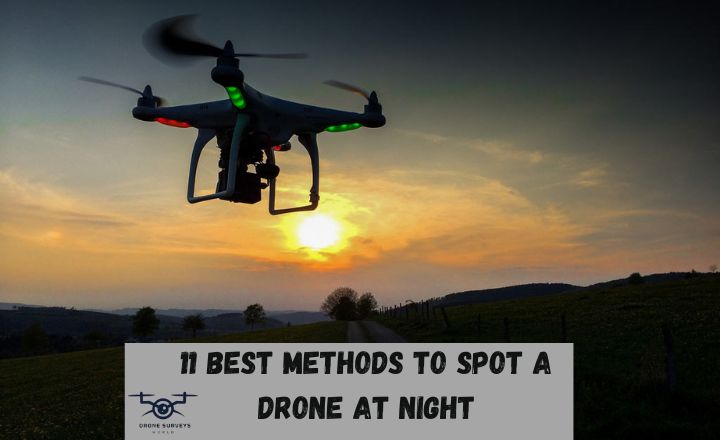What Is Remote ID? The Federal Aviation Administration (FAA) has issued a new rule called Remote ID. It is now in effect for drones weighing between .55 and 55 pounds. The rule aims to improve accountability and safety in drone operations. From March 16, 2024, commercial pilots and recreational users must follow these rules to fly legally. This development will significantly impact drone enthusiasts worldwide.
What Is Remote ID?
Remote ID is changing drone technology. The FAA wants drones to broadcast ID and location info for safety. This helps monitor who is flying and stops unauthorized flights near sensitive areas. It opens up new uses for drones in delivery, surveillance, and emergencies.
Drones with Remote ID can change how we use technology. They can navigate complex areas and be easily identified. This transparency boosts accountability and helps drones fit into our lives safely. It sets the stage for collaboration between regulators and drone fans to integrate drones into society.
Who Has to Comply with Remote ID Drone Requirements?
Remote ID drone rules are now required for all drones in the U.S. It’s important to know who doesn’t have to follow these rules. Drones under .55 pounds are used just for fun, so they don’t need to follow Remote ID. If you only fly in an FAA-Recognized Identification Area (FRIA), you don’t need to follow Remote ID.
These exceptions give some freedom to recreational drone users and those in specific areas. Most drone operators must follow FAA Remote ID rules for fun or work. These rules help make the drone industry safer by letting authorities identify and track drones in the sky. All drone owners must know and follow these rules to stay out of trouble and help keep the skies safe for everyone.
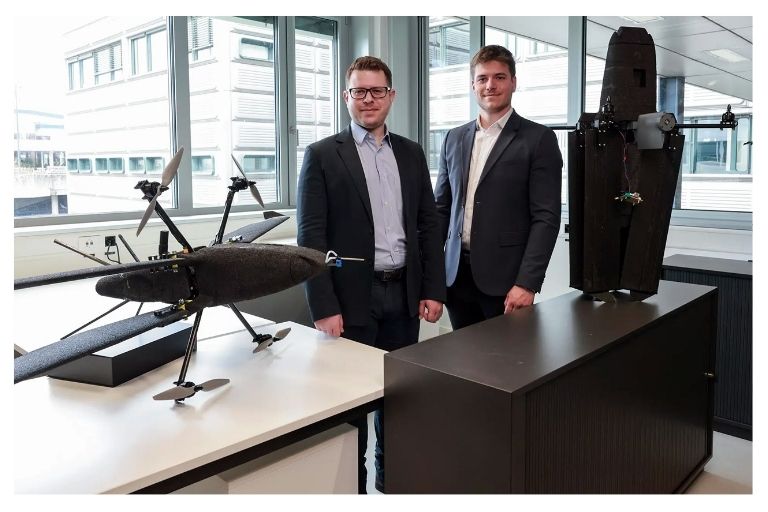
How to Comply with the Remote ID Rules?
You can follow the Remote ID rule for broadcasting in three ways.
Use Standard Remote ID
Using a Standard drone Remote ID on your drone helps you operate safely and responsibly in today’s airspace. When integrated into your device, this feature ensures compliance with regulations and enhances overall safety. By sharing identification information with authorities and other airspace users, you improve situational awareness and reduce the risk of collisions and unauthorized drone activity.
Use a Remote ID module
This upgrade ensures regulatory adherence, enhances safety and improves accountability during flights. Embracing this technology opens up possibilities for drone enthusiasts. Imagine digitally integrating your drone into airspace management, where it can easily communicate its identity and location.
The convenience of making your drone comply with regulations through an add-on module shows how innovation can bridge the gap between current technology and changing requirements in recreational and professional drone operations.
Fly Only In A FRIA (FAA-Recognized Identification Area)
Flying in a FRIA, or FAA-Recognized Identification Area, gives drone operators an advantage. Pilots don’t need to broadcast a Remote ID signal by flying in these areas. This makes operations easier and improves the flying experience by allowing more focused flights.
Two Buckets For Compliance
There are two buckets for compliance with Remote ID for drone flights: one for FRIA flights and one for all other flights. For most drone flights, there are two things you need to do to comply with Remote ID.
Here they are:
Broadcast a Remote ID signal from your drone while flying
Broadcasting a remote ID signal from your drone is important for safety, as drones are used in industries like photography, videography, agriculture, and delivery services. The Remote ID signal helps identify and track drone operators, reducing accidents and unauthorized flights.
The Standard Remote ID system allows drones to send information during flights, like details about the drone, its location, and operator contact information. Using this system or adding a Remote ID Broadcast module to your drone makes the airspace safer.
Register your drone with the FAA for Remote ID
Register your drone with the FAA for Remote ID to ensure safe and responsible operations. The Remote ID Serial Number is a unique identifier for your drone, allowing authorities to track its movements and maintain airspace security. When choosing your drone’s Remote ID type, consider factors like broadcast or network capabilities to comply with regulations.
We will discuss each requirement in detail in the following two sections.
How To Broadcast A Remote ID Signal From Your Drone?
To follow the Remote ID rule, send a Remote ID signal from your drone.
You can broadcast a Remote ID signal in two ways.
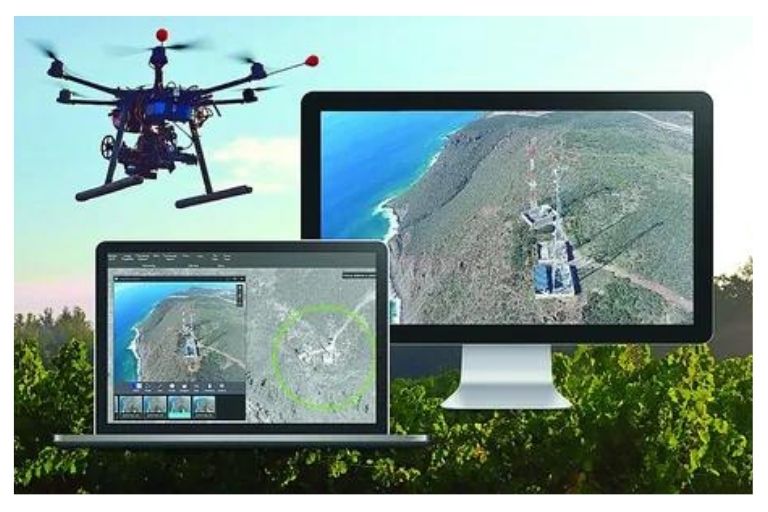
1. Use A Drone With A Standard Remote ID
Before buying a drone with Standard Remote ID, research the model you want. Some companies may not have met compliance deadlines, so check if the drone is compliant. Drones made after September 16, 2022, should be compliant, but there may still be issues across the industry.
Updating your drone’s firmware to add Standard Remote ID is another way to ensure compliance. The process varies depending on the manufacturer and model, so follow the company’s guidelines carefully. By addressing Remote ID requirements early, you can comply with regulations and fly safely and responsibly.
Drones that Can Be Made Remote ID Compliant via Firmware Updates
Drones like DJI Avata, DJI Agras T40, DJI Mavic 3 Pro, DJI Mavic 3 Pro Cine, DJI Mavic 3, DJI Mavic 3 Classic, DJI Mavic 3 Cine, DJI Mavic 3 Enterprise, DJI Mavic 3 Thermal, DJI Mavic 3 Multispectral, DJI Inspire 3, DJI M350 RTK, DJI M300 RTK, DJI Matrice 30, DJI Matrice 30 Thermal, DJI Mavic Pro Platinum, DJI Air 2S, DJI Mini 3, and DJI Mini 3 Pro can be updated with firmware to comply with Remote ID.
Flyability
- The Elios 3 RID
Microdrones
- Microdrones MD4-3000
- Microdrones MD4-1000
Skydio
- The Skydio 2
- The Skydio 2+
- The Skydio X2E
Wingtra
- WingtraOne Gen II
2. Attach A Remote ID Broadcast Module To Your Drone
Choosing the right broadcast module for your drone is important to follow Remote ID rules. The Dronetag Mini is small and easy to install, making it a top pick for drone fans upgrading their old models. The Hex Cube ID Serial has advanced features and a secure connection, perfect for users who care about protecting their data and having a reliable connection.
How To Find Your Remote ID Serial Number?
Your drone’s Remote ID serial number may differ from the aircraft serial number.
Here is how to find the serial number for your drone’s remote control:
Check In The Drone’s Mobile App
Open the DJI Fly or DJI Go app and go to settings or account to find your drone’s serial number. This number is important for registering, warranty, and fixing issues. Having the serial number in the app helps drone owners easily access important information without looking at physical documents.
Check The Drone’s Body
To find a drone’s serial number, check the body. The number is usually printed there, but it might be easy to miss. It could be under the battery or on the tail.
Check The User Manual
To find a product’s serial number, check the user manual. It contains important information that can help you, including the serial number and other details about your product.
Check The Manufacturer’s Website
The manufacturer’s website has a lot of useful information about your drone. You can find specifications, manuals, updates, troubleshooting guides, and tips to improve your drone’s performance. Exploring the website can help you discover hidden features that can enhance your aerial photography or videography skills.
What Is A FRIA?
Flying in a FRIA lets drone fans enjoy their hobby without Remote ID restrictions. It gives pilots a feeling of freedom, letting them explore the skies in certain areas. Following FRIA rules is crucial for safe flying.
Although flying in a FRIA may seem restricted, it challenges pilots to improve their skills within set limits. Flying in these spaces needs precision and planning, making each flight exciting. Embracing FRIAs allows drone operators to be creative while following FAA rules.
Want to Create a FRIA?
Creating a FRIA (FAA-recognized Identification Area) is important for Community-Based Organizations and schools. They can set up safe and legal drone areas by using the FAADroneZone platform. The FRIA dashboard helps them navigate the process easily and confirm profiles and services quickly.
This effort encourages responsible drone use and collaboration in aviation. Establishing a FRIA shows a commitment to safety and provides opportunities for research, education, and recreational drone activities. The FAA’s clear guidelines help CBOs and schools contribute to the drone industry while following rules. Creating a FRIA demonstrates a dedication to safe drone practices and supports the integration of drones into different fields of study and development.
Remote ID Resources
The FAA provides many resources, including web pages, toolkits, and summaries, to help people understand Remote ID for drones. The FAA is committed to promoting safe drone use. Industry professionals can use the FAA’s guidance on Remote ID to follow rules and best practices.
The Code of Federal Regulations, Part 89, also has important information on Remote ID. Using these resources, drone enthusiasts and industry professionals can stay updated on Remote ID rules and learn more about this field. Access to detailed materials can help individuals understand Remote ID requirements and make the airspace safer.
Remote ID Deadline Extention—A Short History
The Remote ID deadline has been extended to March 16, 2024. Many drone pilots were relieved by this change because they struggled to meet the original requirements. The FAA decided to delay enforcement in response to industry feedback and technology challenges. This decision recognizes the difficulties of implementing Remote ID and gives stakeholders more time to adjust without facing immediate penalties.
The extension allows drone operators to prepare for future regulations. They now have extra time to ensure they have the right technology and knowledge to follow Remote ID guidelines when enforcement starts. This delay also creates an opportunity for regulators, manufacturers, and users to collaborate on developing safe ways to integrate drones into airspace.
Why Did the FAA Extend the Remote ID Deadline?
The FAA extended the Remote ID implementation deadline due to a shortage of required broadcast modules. Manufacturers are facing challenges meeting demand, causing delays in providing compliant devices. Slow approvals from the FAA for Declarations of Compliance also add to the delay.
Without these approvals, manufacturers cannot make and distribute compliant drones. Slow software updates from manufacturers make it hard to meet compliance standards, leading to frustration among drone operators about the uncertainty of Remote ID requirements.
Let’s look at each one.
1. Lack of supply for Remote ID broadcast modules
The lack of remote identification broadcast modules is a problem for drone operators. It shows how quickly drone technology is developing and being used. The industry is growing, and the need to follow rules like Remote ID is causing issues for supply chains. This shortage highlights the importance of predicting market trends and having the right parts available for new and old drone models.
It also reminds us of the changing rules for drones in the sky. We need cooperation between regulators, makers, and suppliers to ensure everything runs smoothly. While challenges like this can happen when new rules are introduced, they also allow us to be creative in fixing supply chain problems and strengthening drone operations.

2. The FAA’s slow approvals of manufacturer Declarations of Compliance
The FAA is taking a long time to approve manufacturer Declarations of Compliance, causing problems in the drone industry. Companies need these approvals to follow Remote ID rules, but delays slow things down. Meeting the FAA’s strict production requirements is also hard for manufacturers, who are already busy with deadlines and market demands.
The extension of the Remote ID deadline is partly due to these slow approvals, which raises concerns about how efficient and adaptable the regulatory process is. The FAA’s careful approval process shows that they want to ensure safety standards are met, but they need to find a balance between being thorough and being quick to help the drone industry grow and develop new technologies smoothly.
3. Lack of software updates from manufacturers
Failure to update drone manufacturers’ software is a big problem when following Remote ID rules. The FAA instructed manufacturers to update drones and provide necessary software updates, but many drone companies have not done this for all their models.
This makes it difficult for drone owners to comply with the rules as they lack the required updates. The delay in updates hinders rule compliance and raises safety and security concerns in the airspace. Companies failing to provide timely updates indicate a lack of responsibility in the drone industry. It suggests that manufacturers are not fully dedicated to ensuring their products comply with rules and are safe.
This not only impacts drone owners but also complicates the establishment of a safe drone system in the national airspace. Resolving these issues through software updates is crucial for rule compliance and ensuring drone safety.
4. The FAA’s delays with FRIA Approvals
The FAA is taking time to approve FRIA requests, causing frustration in the drone community. Flying in a FRIA is a good way to avoid complex rules, but there aren’t enough approved areas. People wonder why the FAA is slow in approving requests, making it hard for them to fly freely.
As drones become more popular, there is a growing need for more FRIAs. The slow approval process shows a gap between rules and the industry’s needs. With only a few FRIAs approved, the FAA must speed up its evaluation process to keep up with the changing drone use.
Conclusion
What Is Remote ID? Remote ID is a big step in regulating drone use. It helps authorities control airspace safety, and pilots must follow the new rules to avoid penalties. Everyone involved in the drone industry must stay informed and follow the rules. Let’s embrace this new era of transparency and responsibility by learning about Remote ID and using it when flying drones.
Frequently Asked Questions
Can you Fly a Drone Without a Remote ID?
Flying a drone without a Remote ID is not a good idea. It could be against the law in some places and might be dangerous. Remote ID helps authorities monitor drones, making sure they are safe and accountable. Without Remote ID, it’s hard for authorities to watch over drone flights, which could lead to accidents or misuse.
How do I Track my Drone?
You can track your drone in different ways based on its features. One way is using GPS tracking. It shows your drone’s location on a map in real-time using a mobile app or controller screen. This helps you monitor its flight path and keep it safe.
